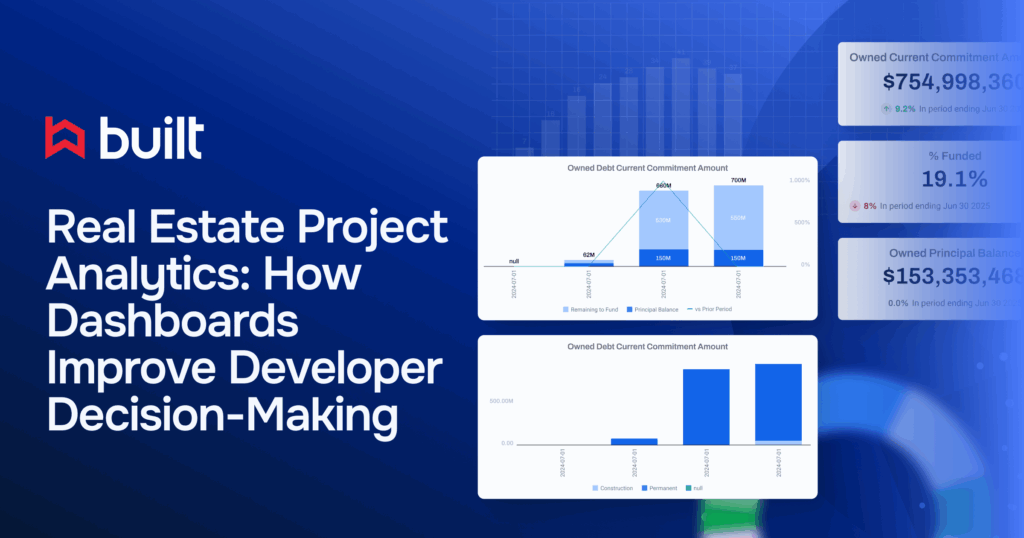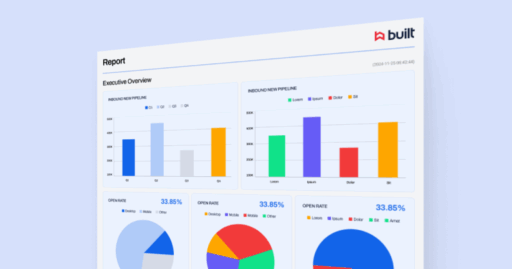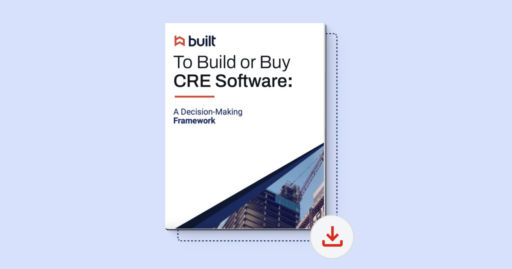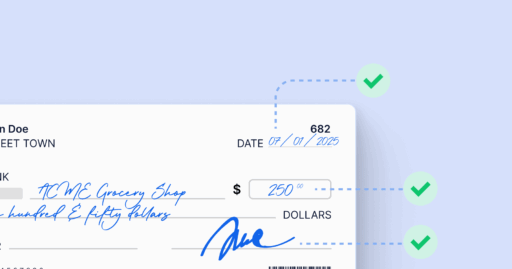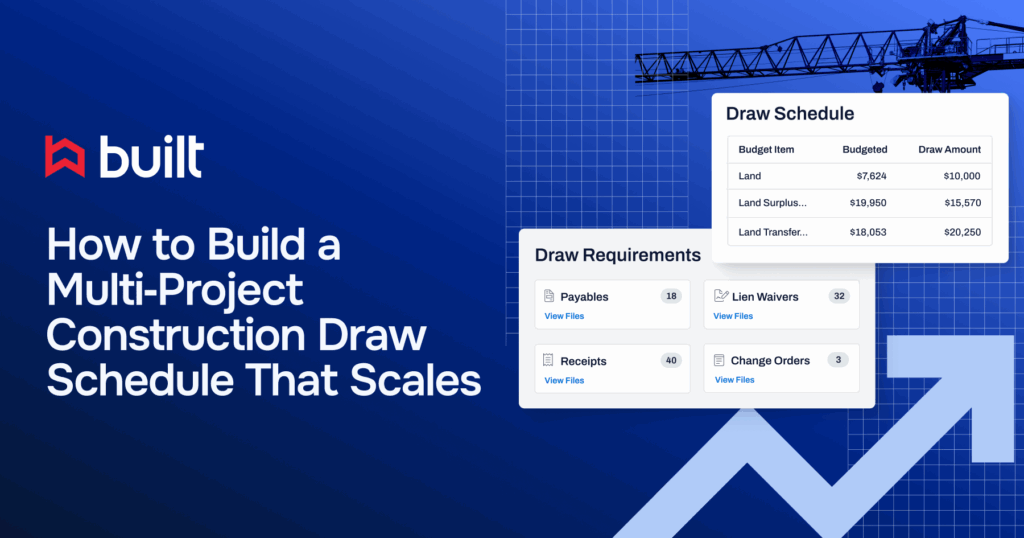
Why Excel Fails Real Estate Developers in the Construction Draw Process

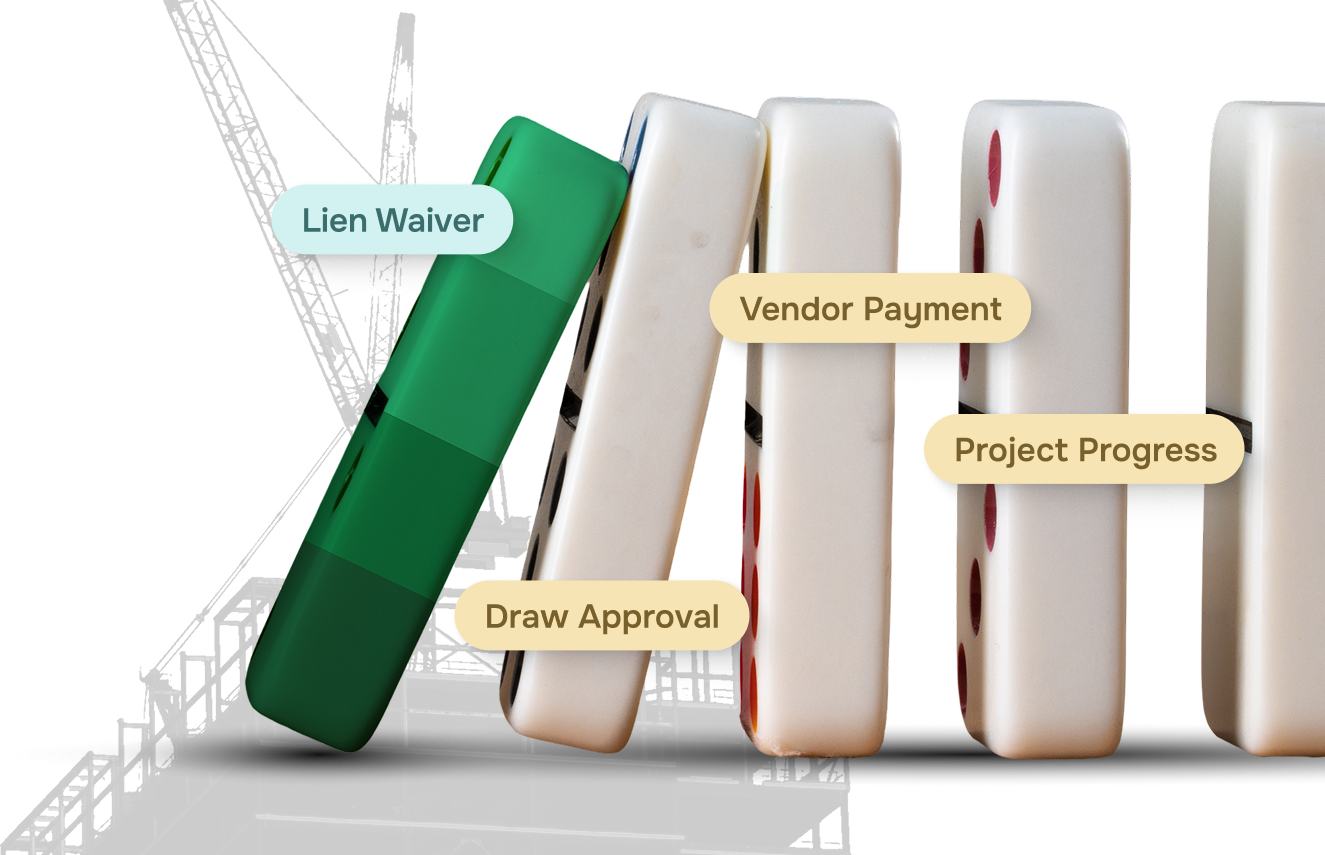
Spreadsheets weren’t built to manage millions in construction funding, or the complexity of today’s construction draw process. Yet across lean owner-developer teams, they still hold the keys to draw schedules, payment requests, and lien waivers, all of which are critical elements of cash flow and compliance.
It starts simply enough: one project, one file, a few formulas to track allocations. But once that workflow is stretched across a portfolio, five or fifteen active developments, each with its own stakeholders and shifting budgets, the cracks begin to show.
And with private project abandonments spiking in early 2025, “well above historic averages,” according to ConstructConnect, developer teams can’t afford the compounding risk of spreadsheet chaos. One delay, one missed waiver, or one formula error can put millions on the line in a market already under pressure.
This isn’t just an operational inconvenience. It’s a systemic risk. Delayed payments, manual errors, and broken audit trails don’t just slow projects, they also strain relationships with capital partners, jeopardize timely milestones, and put future growth at risk.
This article breaks down why the construction draw schedule breaks at scale, and how leading owner-developer teams are replacing spreadsheets with purpose-built tools designed for financial control, speed, and visibility.
The True Cost of a “Simple” Construction Draw Schedule
Developers love simplicity until it becomes a liability.
Excel is familiar. It’s flexible. And it doesn’t require a license or a login. But when that spreadsheet becomes your source of truth for managing disbursements, payment schedules, and approvals, simplicity quickly reveals its limits.
Each change order requires a manual update. Lien waivers live in scattered folders or inboxes. Draw approvals hinge on someone remembering to highlight a status cell yellow. One missed step or outdated version can derail the entire draw process.
The result?
- Delays in funding caused by missing documents or approval bottlenecks
- Duplicate or late payments due to reconciliation errors and outdated files
- Compliance risk from incomplete audit trails and disconnected documentation
In recent sales conversations, multiple owner-developer teams reported construction loan draw cycles stretching beyond 14 days when relying on spreadsheets, which delays vendor payments, slows project progress, and triggers capital partner frustration.
Even a three- to five-day delay can hold up critical progress payments and invite scrutiny. Multiply that risk across a portfolio, and the spreadsheet becomes less a system of record and more a single point of failure.
Why Excel Breaks at Scale, Especially in Multi‑Project Portfolios
In early-stage construction projects, spreadsheets may offer just enough control: one file, a few tabs, a formula for tracking draw requests and disbursements. But once that setup is duplicated across a growing portfolio, the cracks turn into fault lines.
This isn’t just a story about inefficiency; it’s also about operational blind spots, financial risk, and an over-reliance on tribal knowledge.
1. Approvals Don’t Scale with Complexity
Construction draw approvals in Excel aren’t routed, they’re forwarded. That means the approval process relies on inbox vigilance and institutional memory.
One hybrid owner-developer shared that once their portfolio grew past five active projects, their PM was spending nearly 30% of their week just chasing approvals and reconciling documents. No one knew the project status of a draw without checking in manually. No alerts, no accountability, no audit trail.
Across several discovery calls, developer teams described “losing a day per draw” simply due to back-and-forth coordination. That’s a full work week lost every month, per PM, per portfolio.
2. Version Control Risks Mount Quickly
Excel isn’t collaborative. It’s duplicative. Every team member downloads a copy, makes edits, or builds their own trackers. What starts as one “draw schedule” quickly turns into five conflicting ones.
In a Reddit thread, a small GC managing niche development work explained it as follows:
“I have multiple versions of spreadsheets ordered by dates . . .virtually every box has a function in it, so I wouldn’t be able to copy and paste. Every change means I need to update formulas and links manually, or I risk breaking something.”
— GC / Reddit, r/Construction
This isn’t just an inconvenience. When those mismatches impact funding approvals or payment schedules, the risk becomes financial. Teams miss key lien waiver submissions. Funds sit idle. Projects slow down.
3. No Portfolio-Level Oversight
Spreadsheets can’t roll up data across multiple construction sites. There’s no way to answer the following:
- “What’s our total exposure to change orders this month?”
- “Are any sites approaching draw limits?”
- “Which vendors are consistently late on documentation?”
While not an owner-developer, one lender described a similar challenge before switching to Built: “We were looking for a tool that would help us get away, really from Excel spreadsheets, and also help us provide a sophisticated type of tool for our clients . . . your reporting is all in one place.”
Without a live dashboard, leadership flies blind. Field teams guess. Financial control becomes reactive. Audit prep becomes a fire drill.
4. Forecasting Becomes Fiction
Most construction project owners don’t just want to track spend, they need to predict it.
But when budgets, retention, contingency reserves, and cost overruns are all managed in isolated tabs or different spreadsheets entirely, cash flow forecasting becomes guesswork. Especially for teams navigating complex loan agreements, layered capital stacks, or phased developments.
Even seemingly simple tasks like draw reconciliation can drag out reporting cycles. Rod Heisler, owner of Rod Heisler Construction, shared “This Godsend made our life so much easier . . . I get all the required backup with the invoices . . . it’s also getting us paid a lot quicker from our clients.”
It’s a clear example of how centralizing documentation doesn’t just speed up payments, it also unlocks the operational control needed to forecast accurately and move capital with confidence.
The Overlooked Risks: Construction Project Risk Management
In the construction industry, risk is often tied to materials delays or shifting costs. But for project owners managing multiple construction projects, the more critical threats are operational, hidden inside spreadsheets, email chains, and fragmented payment schedules.
In recent conversations with owner–developer teams, a common theme emerged: many didn’t realize they had a risk problem until a missing lien waiver delayed a draw for two weeks and stalled work in the field. These aren’t one-off issues. They’re symptoms of deeper problems with fragmented systems and manual coordination.
Two of the most underestimated-yet-recurring risk factors? Manual workflows and lack of version control.
How Manual Workflows Disrupt Project Progress
When your draw schedule, payment plan, and supporting documents are managed manually across Excel, PDFs, and inboxes, the potential for error multiplies with every project milestone.
- A line item for completed work is missed during a manual update.
- A general contractor submits documentation late, delaying funds.
- A draw request is approved without referencing the latest construction costs or contingency balances.
As project scale increases, so do operational risks. In interviews, one PM managing five active builds shared they spend more than 12 hours each week just reconciling draw data and tracking down missing documentation, which is time they’d rather spend managing construction progress.
Manual processes also limit financial control. If a payment request is based on outdated budget allocations or missing soft costs, teams may overspend, or worse, they may trigger capital partner concerns. Without timely, accurate data, even well-structured construction financing strategies begin to unravel.
The Risk of Version Control and Data Fragmentation
Construction draw schedules aren’t static. They evolve as projects progress and costs shift. But when different stakeholders manage their own versions of the same draw schedule or payment tracker, the risk of misalignment grows fast.
Finance has one version.
The GC has another.
The third-party lender is referencing last month’s email thread.
These mismatches create blind spots. Requests are delayed, payments are duplicated, and audits reveal inconsistencies.
In one Reddit thread on managing Schedules of Values, a scheduler explained, “Every draw I do is essentially copy and paste,” pointing to the fragmented, manual processes many teams still rely on for billing and lender communication. Across comments, GCs discussed manually front-loading SOVs, adjusting cost-loaded schedules, and juggling spreadsheets, all of which contribute to version control risks when not centralized.
A centralized solution eliminates the guesswork. It ensures everyone from project managers to capital partners to contractors accesses the same real-time draw schedule, with locked approvals, version history, and full traceability.
When most construction loans hinge on clean documentation and reliable project status updates, fragmented systems become more than a nuisance. They become a liability.
What a Modern Construction Draw Workflow Should Look Like
When developers manage multi-million-dollar disbursements with tools not built for scale, mistakes compound and delays become inevitable. A centralized construction financials platform like Built changes that by eliminating bottlenecks, improving collaboration, and reducing risk at every step.
One Unified Flow: From Submission to Funding
Instead of juggling draw requests across inboxes, folders, and spreadsheets, a centralized platform brings the full workflow, including submission, validation, approval, and funding, into a single, secure environment.
Vendors upload documentation directly. Project managers review with built-in guardrails. Accounting signs off with confidence. Capital partners can track progress without waiting on monthly reports or version updates.
Teams that once spent hours per week chasing draw status now manage everything in one place that is structured, role-based, and rules-driven.
In our experience working with mid-market developers, a single draw request can trigger eight or nine email threads, each introducing delays, confusion, or missed updates. Moving everything in-platform helps teams regain time, reduce rework, and stay aligned.
No More “Where’s the Waiver?”
Lien waivers and compliance docs are a common choke point. If one form goes missing, disbursements stall, and fieldwork gets held up.
With an automated draw workflow, documents like lien waivers and insurance certificates are requested, validated, and stored as part of the draw submission process. No chasing. No second-guessing. Just smooth, documented flow from request to release.
In our experience working with REIT-backed developers, teams that previously waited days for lien waiver validation saw that timeline shrink to seconds once the process was automated by integrating waiver collection into the draw submission workflow.
Built-In Roles and Automatic Audit Trails
Modern draw workflows give every stakeholder visibility into exactly what they need, nothing more, nothing less.
GCs see approved line items. CFOs monitor contingency and spend-to-date. Capital partners track disbursement pace and compliance. Every approval, edit, or upload is logged in real time.
The result? A clean audit trail built as you go with no scramble at quarter’s end. Just full traceability, accessible on demand.
Manual Draw Management Isn’t Built for Growth
Spreadsheets might offer short-term convenience, but they’re no match for the complexity of modern construction financing. For owner–developer teams managing multiple active developments, the traditional draw process anchored in static files and manual coordination introduces friction at every turn.
Each draw cycle is tied to high-stakes capital movement, regulatory compliance, and the financial health of a project. When requests are routed through emails, reconciled across disconnected draw schedules, and tracked in siloed spreadsheets, the risk of delays, miscommunication, and costly errors compounds. Teams lose real-time visibility into payment schedules, documentation gets missed or duplicated, and forecasting turns into a guessing game.
These aren’t just operational setbacks. They’re threats to cash flow, partner confidence, and long-term scalability. A construction loan draw process built on outdated tools can’t keep pace with the demands of today’s portfolios.
A centralized, purpose-built solution offers more than efficiency. It brings structure, visibility, and control to a process that directly impacts project timelines, vendor relationships, and financial outcomes. By streamlining the construction draw schedule and connecting every stakeholder through a shared system, real estate developers can reduce turnaround times, ensure compliance, and maintain momentum across projects.
If spreadsheets are slowing your team down, it’s time to consider what purpose-built construction financial management can do to support growth. Book a demo with Built today to see how it works across real portfolios.
Construction Draw Process: FAQs for Owner–Developers
Why does draw management become harder as our portfolio grows?
In early-stage projects, a spreadsheet might seem “good enough.” But as your construction portfolio expands, so does the complexity. There are more contractors, overlapping draw schedules, and higher stakes tied to each disbursement.
Without a centralized system, project managers spend hours chasing approvals, version control breaks down, and your team loses visibility into cash flow and project status. The result? Delayed funding, stalled progress, and increasing pressure from lenders and equity partners.
How does poor draw schedule management impact cash flow and capital pacing?
Delayed or inaccurate draw requests can disrupt the entire construction loan lifecycle. If disbursements stall due to missing lien waivers or misaligned documentation, vendor payments get delayed, and capital partners start asking questions.
For developers managing layered capital stacks, poor coordination directly affects project pacing and jeopardizes your ability to hit key milestones tied to the release of funds. Accurate, timely draw schedules are essential to protect working capital and maintain lender trust.
What should we look for in a construction financial management platform?
Owner–developer teams need more than just digital spreadsheets. Look for tools that support real-time draw tracking, structured approval workflows, and centralized document storage. Key features should include role-based access, automated lien waiver collection, and audit-ready reporting.
Most importantly, the platform should scale with your portfolio, so whether you’re managing five projects or 25, you retain control over every line item, every vendor payment, and every funding release.

Mark Murphy leads OGC Sales at Built, where he is responsible for accelerating adoption of payments and standalone solutions purpose-built for real estate owners, developers, and general contractors. He brings deep experience across sales, general management, and operations in technology-driven businesses.
Prior to joining Built, Mark served as General Manager at Apex Service Partners and Operating Executive at Alpine Investors. He also spent over six years at Flexport, where he held multiple leadership roles including General Manager for the South and Northeast regions, and Director & Acting General Manager for San Francisco and Northern California. Earlier in his career, Mark was Chief Operating Officer at Oolong, an INC 500-recognized international trading business.
Mark holds a degree in Mechanical Engineering from Stanford University, where he captained the Varsity Men’s Rowing team.
Related Posts


1099-NEC Reporting in Construction: What Lenders and Developers Need to Know
